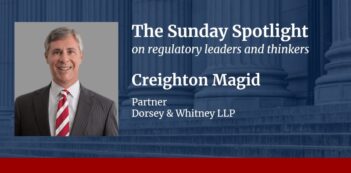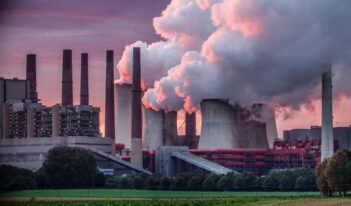
EPA’s proposed relaxation of a rule restricting water pollution from coal plants generates controversy.
In a country where nearly 37 million people live within 30 miles of a coal burning power plant, a lot rides on how the U.S. government regulates those plants and the pollutants they release.
When toxic pollutants such as arsenic, mercury, and lead—all common byproducts of coal combustion—contaminate drinking water, the surrounding communities face devastating health impacts. People who drink water contaminated with heavy metals or eat fish from polluted waters can develop heart disease, cancer, neurological disorders, and vital organ damage. Often, children can be more susceptible to these health risks.
The U.S. Environmental Protection Agency (EPA), however, recently proposed a rule that could weaken an Obama-era regulation that imposed more stringent wastewater restrictions—commonly referred to as effluent limitations— on coal burning power plants in an effort to reduce the amounts of harmful contaminants entering Americans’ drinking water.
Finalized in 2015, the original rule imposed effluent limitations on coal burning power plants based on the best available and economically achievable technology. The agency estimated that these limitations would result in a 1.4 billion pound annual reduction of toxic metal wastewater pollution and up to $566 million in monetized societal benefits.
EPA’s new proposal seeks to modify the effluent limitations for two of the waste streams covered by the 2015 rule: flue gas desulfurization (FGD) wastewater, and bottom ash transport water. FGD is a technology employed by coal burning power plants to remove sulfur dioxide from their exhaust emissions and which also generates a wastewater byproduct. Bottom ash is a residue of coal combustion that settles at the bottom of a furnace and is then washed away with water.
Under the proposed rule, EPA would expand the list of available technologies for FGD wastewater treatment to include two additional technologies that were not approved in 2015. EPA now explains that technology has improved since 2015 and that these two alternatives are less expensive for coal plants, but just as effective. The rule would also relax the FGD effluent limitations for plants that will soon be retiring and for plants that only operate for a portion of the year.
Furthermore, EPA is proposing to change the effluent limitations for bottom ash transport water to create an exception that allows for coal plants to “purge” up to 10 percent of the water used to flush the bottom ash from their furnaces. This new 10 percent exception, combined with the relaxed FGD effluent limitations, would likely lead to an increase in annual wastewater pollution.
Not unlike the 2015 rule finalized by the Obama Administration, EPA supports its newly proposed changes with a benefit-cost analysis. The analysis, however, emphasizes compliance cost reductions rather than any potential loss of health and environmental benefits. EPA estimates that the proposal will reduce social costs by $137 million annually and will save coal plants $175 million annually in compliance costs.
Although the proposed rule is EPA’s first attempt at modifying the effluent limitations put in place by the 2015 rule, this is not its first attempt to alleviate the burdens of that rule on the coal industry. The 2015 rule itself was immediately challenged in court by the industry, and EPA received several petitions to reconsider its effluent limitations. Following the change in administration in 2017, EPA finalized a rule that postponed the effluent limitations compliance date from November 1, 2018 to November 1, 2020.
Critics of EPA’s recently proposed rule charge that EPA is not acting in the public interest. “The Trump Administration is up-front about its rationale: The proposal isn’t meant to enhance public health or protect the environment; it will only enhance and protect the profits of the utility industry,” said representatives of Earthjustice, a national environmental group. Furthermore, Kathleen Sullivan of the Southern Environmental Law Center has said that “EPA is taking two giant steps backward in protecting communities and clean water from toxic coal ash pollution.”
The proposed rule is certainly not without its supporters, though. Proponents assert that the proposed changes would amount to a win-win for the coal industry and the environment. In a prepared statement, EPA Administrator Andrew Wheeler has claimed that the “proposed revisions support the Trump Administration’s commitment to responsible, reasonable regulations by taking a common-sense approach, which also protects public health and the environment.”
Not surprisingly, coal-producing states are also pleased with the proposed rule. “The proposed regulations will improve the regulatory burden on the coal industry and lower the cost of electricity for West Virginians,” said West Virginia Attorney General Patrick Morrisey.



